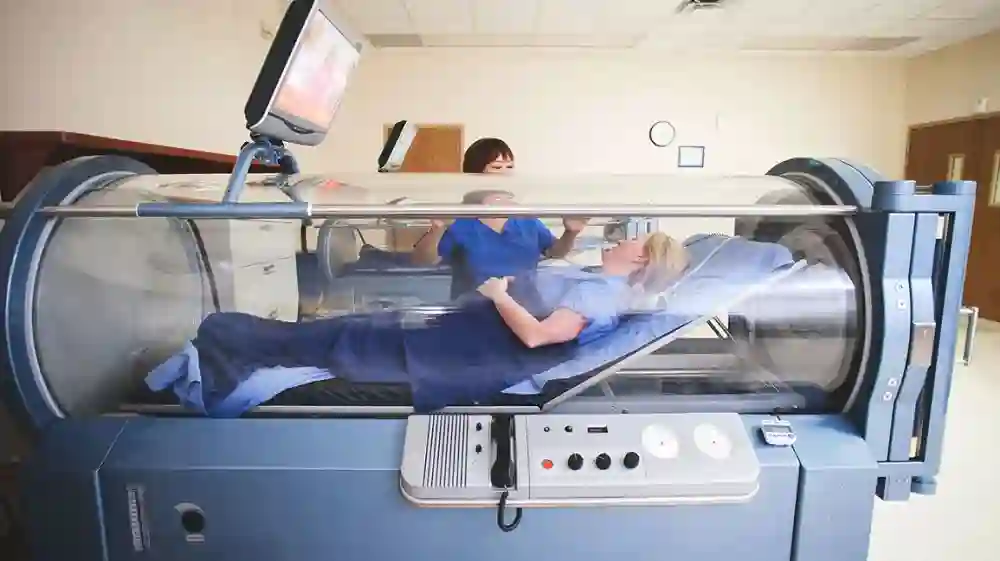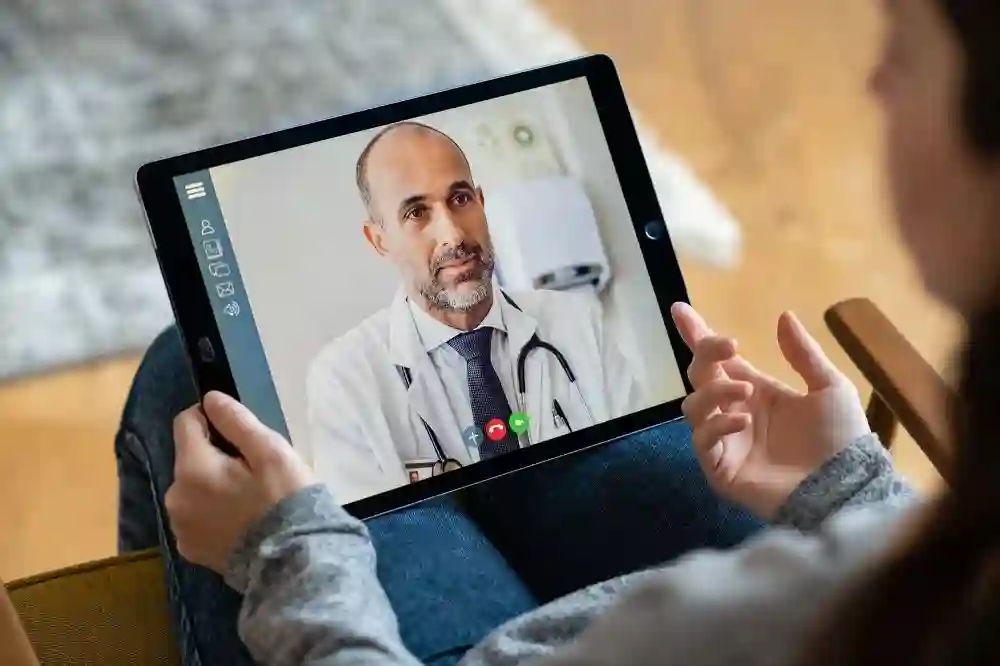Health & Fitness
Exploring the Potential of Hyperbaric Oxygen Therapy in Modern Medicine

Table of Contents:
- Key Takeaways
- Introduction
- How HBOT Works
- The Science Behind HBOT
- Medical Conditions Benefiting from HBOT
- Safety and Risks of HBOT
- Accessibility and Availability of HBOT
- The Role of HBOT in Holistic Health Practices
- Conclusion
Key Takeaways:
- Hyperbaric Oxygen Therapy (HBOT) involves breathing pure oxygen in a pressurized chamber to enhance the body’s natural healing process.
- HBOT is proven beneficial for various medical conditions, particularly infections and compromised blood flow.
- Ongoing studies are unlocking new potentials of HBOT, broadening its scope and applications in healthcare.
Introduction
Hyperbaric Oxygen Therapy (HBOT) harnesses the natural healing power of oxygen, offering diverse applications in medicine. By creating an environment where patients can absorb larger quantities of oxygen, the treatment has gained traction for its capacity to promote recovery and enhance overall healing. Intrigued by the simplicity of utilizing oxygen, a fundamental life element, scientists and medical professionals continue to advance HBOT’s applications, making it a staple in treatment protocols for various health anomalies.
How HBOT Works
The HBOT procedure is conducted within a hyperbaric chamber, an enclosure that can be pressurized to levels exceeding normal atmospheric conditions. As patients breathe within this environment, their bodies can absorb more oxygen, distributed via circulation to organs and tissues. This fosters an optimized healing environment, especially in areas of injury or disease.
The Science Behind HBOT
Scientific exploration reveals that HBOT’s efficacy stems from oxygen’s pivotal role in reducing inflammation, enhancing immune responses, and promoting angiogenesis—forming new blood vessels. Research highlights these physiological effects, which are maximized under the controlled conditions of the therapy, leading to improved outcomes for patients suffering from various health conditions.
Medical Conditions Benefiting from HBOT
One of the notable successes of HBOT is in treating chronic wounds, such as diabetic foot ulcers, where impaired circulation inhibits conventional healing. By delivering a higher oxygen concentration to the affected area, HBOT speeds up the repair process. Beyond wound care, conditions like carbon monoxide poisoning and diving-related decompression sickness are also responsive to HBOT due to oxygen’s ability to outcompete harmful and restore normal bodily function.
Safety and Risks of HBOT
While HBOT has an impressive safety record, it is not devoid of risks. Minor side effects like ear pain due to pressure changes are managed with standard safety protocols. Serious complications are rare but can include oxygen toxicity and barotrauma. Therefore, treatments should always be supervised professionally in certified treatment centers.
Accessibility and Availability of HBOT
Access to HBOT can be limited by geographic location, insurance coverage, and the cost of procuring the high-tech equipment necessary for administering the therapy. Efforts are being made to improve accessibility as its benefits become increasingly recognized.
The Role of HBOT in Holistic Health Practices
Integrating HBOT into a holistic approach to health emphasizes its adaptability. As a complementary treatment, it augments traditional medical care, aligning with the comprehensive health strategies aimed at treating the patient as a whole rather than focusing exclusively on the ailment.
Conclusion
In summary, HBOT is a scientifically based therapy with growing recognition for its efficacy in treating various medical conditions. Its integration into various medical practices testifies to the therapy’s expanding frontier in enhancing patient care. As research progresses, so does the potential for HBOT to become a more prolific treatment within the medical community.
Health & Fitness
Personalized Care in Addiction Treatment: 4 Reasons Why It Matters

Addiction is a tough issue. Finding the right way to recover can feel overwhelming. One important part of recovery that is often overlooked is personalized care.
Why is it so important? How can it help someone on the road to recovery? In this post, we’ll talk about why tailored addiction treatment plans matter and how they can make a big difference for people dealing with addiction.
If you or someone you know is struggling with addiction, keep reading to learn why personalized care is so important.
1. Individual Needs Lead to Better Outcomes
Each person grappling with addiction has a unique background, mental health status, and social environment. Individualized treatment plans significantly improve the odds of successful recovery. Tailored methods can lead to higher treatment retention rates.
By recognizing the distinct needs of each patient, healthcare professionals can create targeted interventions that address specific triggers and challenges. A personalized care plan often includes thorough assessment processes that take into account the following:
- medical history
- psychological evaluations
- and even cultural factors
This comprehensive understanding enables practitioners to offer strategies that resonate with their clients rather than a generic approach that may not suit everyone.
2. Building Trust Through Personal Connections
Establishing a trusting relationship between patients and caregivers is fundamental to the recovery process. When patients feel understood and valued, they are more likely to engage fully in their treatment. Personalized care fosters these connections.
This also encourages the following:
- open communication
- and a deeper sense of support
Patients who feel connected to their treatment team have the following:
- higher satisfaction rates
- and participate more actively
This trust is a powerful motivator that supports adherence to treatment protocols. The tailored approach resonates with patients and serves as the foundation for their journey towards wellness. Seek a facility that prioritizes personalized care for a more effective recovery experience, such as Eagle Overlook Recovery, for instance. Your path to healing starts with understanding your unique story.
3. Addressing Co-Occurring Disorders
Many people who battle addiction also deal with mental health issues, like the following:
- anxiety
- depression
- or trauma-related disorders
Personalized care in addiction treatment is essential to effectively address these co-occurring disorders. Simply treating addiction without considering underlying mental health issues can hinder recovery.
Integrated treatment for both addiction and mental health conditions can increase the probability of successful recovery. Personalized approaches allow healthcare providers to develop cohesive strategies that target both addiction and mental illness simultaneously.
4. Enhancing Engagement and Compliance
Engagement in treatment is crucial for recovery. Personalized care encourages patients to actively participate in their recovery journeys and empowers them by involving them in decision-making. This active involvement can lead to higher compliance rates with treatment regimens.
When patients have a say in their treatment plans – whether it’s choosing specific therapies or setting personal goals – they are more likely to stay committed. Patients who feel invested in their recovery process are significantly more likely to complete treatment programs. By focusing on personalized care in addiction treatment, facilities can foster a sense of ownership. It motivates individuals to take charge of their health and recovery.
Personalized Care in Addiction Treatment Is Essential for Lasting Recovery
Personalized care in addiction treatment is crucial for successful recovery. By understanding each individual’s unique needs, preferences, and circumstances, personalized care can provide tailored treatment plans and support that address the root causes of addiction. Seek out a treatment program that prioritizes personalized care and take the first step towards a healthier, happier future.
Looking for more tips and advice? You’re in the right place! Make sure to bookmark our page and come back to check out more articles.
Health & Fitness
Is an Intensive Intensive Outpatient Treatment (IOP) Right for You? Evaluating the Benefits of Intensive Outpatient Treatment

IOPs are structured therapeutic environments designed for those who require a consistent level of support without the need for a residential stay. These programs balance treatment and therapy with the flexibility to maintain certain aspects of daily life, such as work or family commitments. IOPs have been gaining traction as a viable option for individuals seeking help with substance abuse or mental health issues without full-time immersion in a treatment facility. If you’re contemplating whether IOP is the next step in your journey toward recovery, you’ve come to the right place. Below, we will delve into what makes IOPs unique and beneficial.
Understanding IOP and How It Works
IOP is a form of care for those battling addiction and mental health challenges that do not require hospitalization or 24/7 supervision. Patients typically attend scheduled sessions multiple times a week where they receive an array of therapies, including group and individual counseling. The environment fosters therapeutic engagement while allowing individuals to apply the skills learned in treatment to real-world settings right away.
The structure of an IOP ensures that individuals with less severe dependencies or those transitioning from inpatient programs have a supportive network. The fundamental goal is to prevent relapse, build healthy coping mechanisms, and facilitate sustained recovery. Treatment plans are often personalized, with the duration and intensity tailored to each person’s specific needs and progress.
One excellent example of an IOP is the service provided by IOP in Santa Monica, which offers a comprehensive approach to outpatient care. Patients have the opportunity to build a sober community, participate in evidence-based therapies, and receive continuous support while integrating the practices into their daily lives.
Exploring the Advantages of IOP for Substance Abuse and Mental Health
One significant advantage of IOPs is the ability to maintain daily responsibilities, such as work or schooling while receiving treatment. This helps to minimize disruption to one’s life and can reduce the stress associated with taking extended leave. The balance of treatment and personal obligations enables individuals to start practicing sober living in real time.
The supportive structure of IOPs also mirrors real-life scenarios, offering a testing ground for coping strategies and relapse prevention techniques. As participants encounter daily stressors, they can bring these experiences into therapy sessions for immediate guidance and feedback. Moreover, the group therapy aspect fosters a sense of community, solidarity, and shared purpose, which is integral to long-lasting recovery.
IOPs also tend to be more affordable than residential treatment options since they require fewer resources to operate. Insurance companies are often more willing to cover outpatient programs, lessening the financial strain on individuals seeking help. Additionally, remaining at home during treatment can offer the soothing presence of loved ones, enhancing comfort during the recovery process.
Comparing IOP With Other Treatment Options: A Comprehensive Guide
Understanding the differences between IOP and other treatment options can inform your decision-making process. Residential or inpatient treatment offers intense, round-the-clock care and is typically best for those with severe addiction or who lack a stable living environment. Comparatively, IOP provides a certain level of freedom and autonomy, allowing participants to remain in their homes.
Another common option is standard outpatient treatment, which is less time-intensive than IOP and may be suitable for those with a strong support system and a less severe level of addiction. However, for those needing more consistent support, IOP offers a more structured approach with more frequent therapy sessions and check-ins.
Making the Decision: Steps to Determine if IOP is the Right Choice for You
Making the decision to enroll in an IOP begins with a thorough self-assessment. Reflect on your current situation, and your past experiences with addiction or mental health treatment, and honestly evaluate your level of commitment to recovery. This internal dialogue helps lay the foundation for a decision that aligns with your needs and goals.
Finally, engage your support system in the decision-making process. Discuss your considerations and ask for their perspectives. Having the backing of your loved ones not only provides emotional support but also practical insights into how an IOP might fit into your collective lives. With everyone’s input and agreement, you can move forward confidently in your choice.
Altogether, choosing an IOP stands as a pivotal point in your journey to recovery. It requires careful thought and consideration of your personal needs and circumstances. By understanding the role of IOP, assessing your suitability, exploring its advantages, comparing it to other options, and delineating a clear decision-making process, you’re well-equipped to make an informed choice. Remember that taking the time to choose the right program can significantly impact the effectiveness of your treatment and your path toward a healthier, fulfilling life.
Health & Fitness
Innovations in Online Health Training

Online health training has changed the way people learn about wellness and medical care. It makes education easy to access and flexible for learners.
Many new trends are shaping the future of this training. Technology plays a big role in making learning more interactive.
These innovations help improve skills and knowledge. They also make healthcare education more efficient and engaging.
Virtual Reality for Hands-On Learning
Virtual reality (VR) creates real-life scenarios for training. Learners can practice skills in a safe environment. It helps in understanding complex medical procedures.
Many courses now include VR simulations. This makes learning more immersive and effective. It also reduces the risks of training on real patients.
VR also allows repeated practice without pressure. This leads to better confidence in performing medical tasks.
Artificial Intelligence for Personalized Learning
Artificial intelligence (AI) helps create custom learning paths. It tracks progress and adapts to the needs of each learner. AI tutors provide instant feedback and guidance. This makes studying more efficient and engaging.
AI can also help with diagnosing medical conditions. It improves decision-making and problem-solving skills. AI-powered chatbots can assist in answering learner questions. This ensures that students receive support at any time.
Gamification for Better Engagement
Gamification makes learning fun and interactive. It uses points, badges, and leaderboards to motivate students. This approach helps retain information better.
Many courses now include game-like elements. It makes training feel less like studying. This method also improves participation and completion rates.
Interactive challenges enhance problem-solving abilities. Engaging quizzes make learning more dynamic.
Telemedicine Training for Remote Care
Telemedicine has become an important part of healthcare. Training programs now focus on remote patient care. Learners study how to conduct virtual consultations.
They also practice using telehealth tools. This prepares them for modern medical practices. It ensures they can provide care from a distance.
Understanding telehealth laws and regulations is also covered. Proper communication techniques help build patient trust.
Interactive Video Modules for Flexibility
Video modules allow learners to study at their own pace. These videos cover different health topics in simple terms. If you visit the website, for example of a health training service, you may find courses with interactive lessons.
This method makes complex concepts easier to understand. Videos also help with visual and auditory learning. They improve knowledge retention and comprehension.
Some platforms include quizzes within videos for better engagement. Live video sessions also allow real-time discussions with instructors.
Mobile Apps for On-the-Go Learning
Mobile apps make learning more accessible. They allow users to study anytime and anywhere. Many apps include quizzes and study guides. They also send reminders to keep learners on track.
This helps busy professionals continue their education. It ensures consistent learning without schedule disruptions. Some apps feature offline access for convenience. Interactive forums within apps help students connect and share knowledge.
Discover Innovations in Online Health Training
Innovations in online health training are improving how people learn. Virtual reality, AI, and gamification make lessons engaging. Telemedicine training prepares learners for modern healthcare.
Interactive videos and mobile apps offer flexibility. These advancements make education more effective. Online health training continues to evolve for better learning experiences.
Should you wish to read more, you can visit our blog. We’ve got more topics!
-

 Travel1 year ago
Travel1 year agoOnboardicafe.com Login Exploring the Delights of Onboardicafe
-

 Food & Recipes12 months ago
Food & Recipes12 months agoFive Food Products You Must Avoid Giving to Your Infant
-

 Sports1 year ago
Sports1 year agoThe Most Popular Sports In The World
-

 Health & Fitness11 months ago
Health & Fitness11 months agoSuboxone Tooth Decay Lawsuits and the Pursuit of Justice Against Indivior
-

 Sports10 months ago
Sports10 months agoSmart Solutions for Football Field Maintenance
-

 Entertainment1 year ago
Entertainment1 year agoNavigating the Web: The Ultimate List of Tamilrockers Proxy Alternatives
-

 Technology4 months ago
Technology4 months agoSustainable Practices in Video Production: Reducing the Carbon Footprint
-

 Sports9 months ago
Sports9 months agoWearable Tech and the Future of Football










